We Debunked Some Weird Yeast Infection Remedies So You Don’t Have To
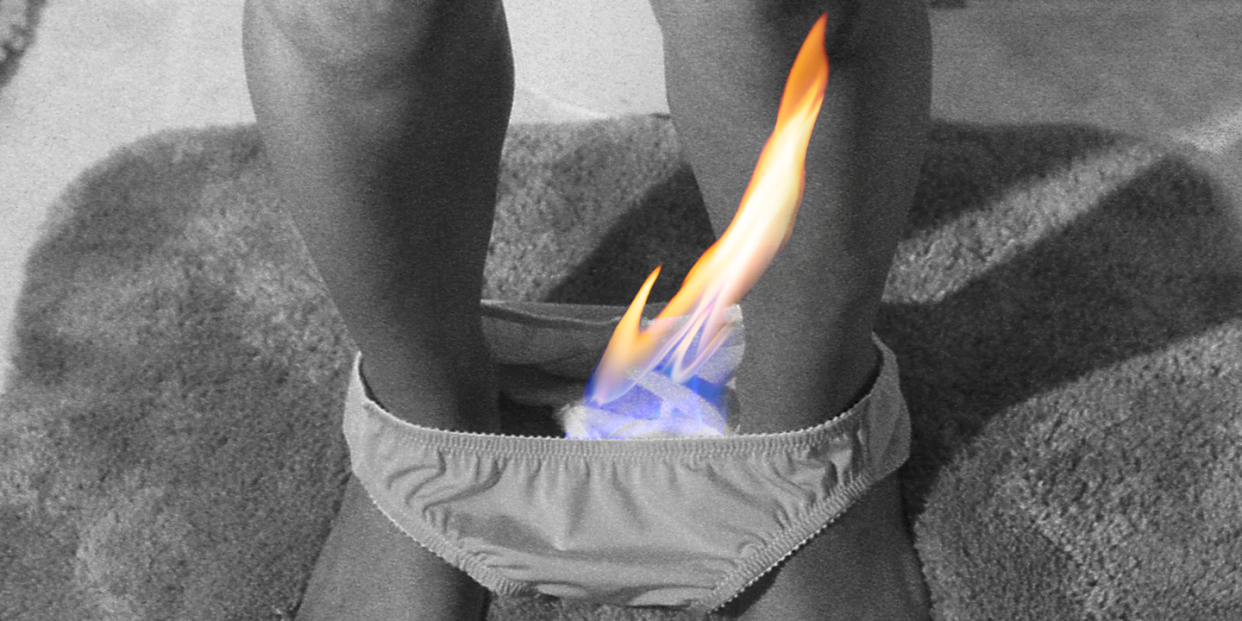
"Hearst Magazines and Yahoo may earn commission or revenue on some items through the links below."
We’re going to assume that you’ve made it here because you have some highly uncomfortable yeast infection symptoms or other sitch happening down there that’s not your norm—the itching, the stinging, the irritation, ugh. And we know you wanna know exactly how to fix a yeast infection so you are never in this predicament again, but hold on a sec. Before you either A. buy out an entire aisle at your local pharmacy or B. look into all natural remedies for yeast infections and decide to take people’s advice of inserting tea tree oil (or pretty much anything else for that matter) in your vagina, please keep reading.
We chatted with OBGYNs to find out the safest home remedies for yeast infections, and all your other burning (sorry) questions about yeast infection treatments, what you should actually buy, what you shouldn’t waste your money on, and how to prevent a yeast infection from recurring. Important stuff.
However, if this is your first yeast infection, you should go see a doctor, says Dr. Brandye, MD, a board certified OBGYN and women’s sex and pleasure coach at LifeLoveLibido. That’s because other types of vaginal infections might mimic certain symptoms of yeast infections (spoiler: none of them are fun but they can all clear up super quickly with the right treatment). You'll also want to see a doc if the symptoms are really severe—if your vulva and vagina are swollen and red, if the skin is splitting, you're experiencing any significant pain, or you've already tried all of the over-the-counter remedies we’re about to recommend below and it still hasn't gone away.
Whether or not this is not your first time at the Monistat Rodeo, here are some tips to fix that yeast infection, stat.
1. Figure out if it's really a yeast infection.
As Dr. Brandye pointed out, there are many things that you might confuse for a yeast infection, like BV, a UTI, or STIs like herpes. Here are some telltale signs to help you differentiate, especially if you're not sure if you should pick up some Monistat, drink cranberry juice, or call your doc.
Yeast infections vs. Bacterial Vaginosis
Yeast infections have lots of itching and irritation and don't usually have a lot of discharge, but if there is, it's white and looks like cottage cheese, explains Dr. Brandye. A more severe yeast infection might cause you discharge with a greenish tint to it. On the other hand, bacterial vaginosis will usually have discharge with a fishy odor.
Yeast infections vs UTIs
Dr. Brandye also adds that sometimes urine coming into contact with the vulva may cause burning, which makes women think they're experiencing a UTI and not a yeast infection, but UTIs have different symptoms, such as pelvic pain, pain when you urinate, and super frequent urination with with only a small amount of pee coming out.
Yeast infections vs STIs
If you notice any new bumps or lesions, it might not be a yeast infection and could be an STI. These bumps might not always be painful, but things like herpes can cause pain and irritation that may mimic a yeast infection, Dr. Brandye says. However, the pain from these lesions would be more localized to where the lesions are.
For reassurance that you're not misdiagnosing another infection, check out the symptom checker on Monistat’s website to help figure out if yeast is for sure the culprit, suggests Taraneh Shirazian, an OBGYN practicing in New York (and a brand ambassador for Monistat). If you have any overlapping symptoms and aren't sure, a call to your doc is the best way to go here.
2. Go for the 7-day OTC treatment, not the 1-day one.
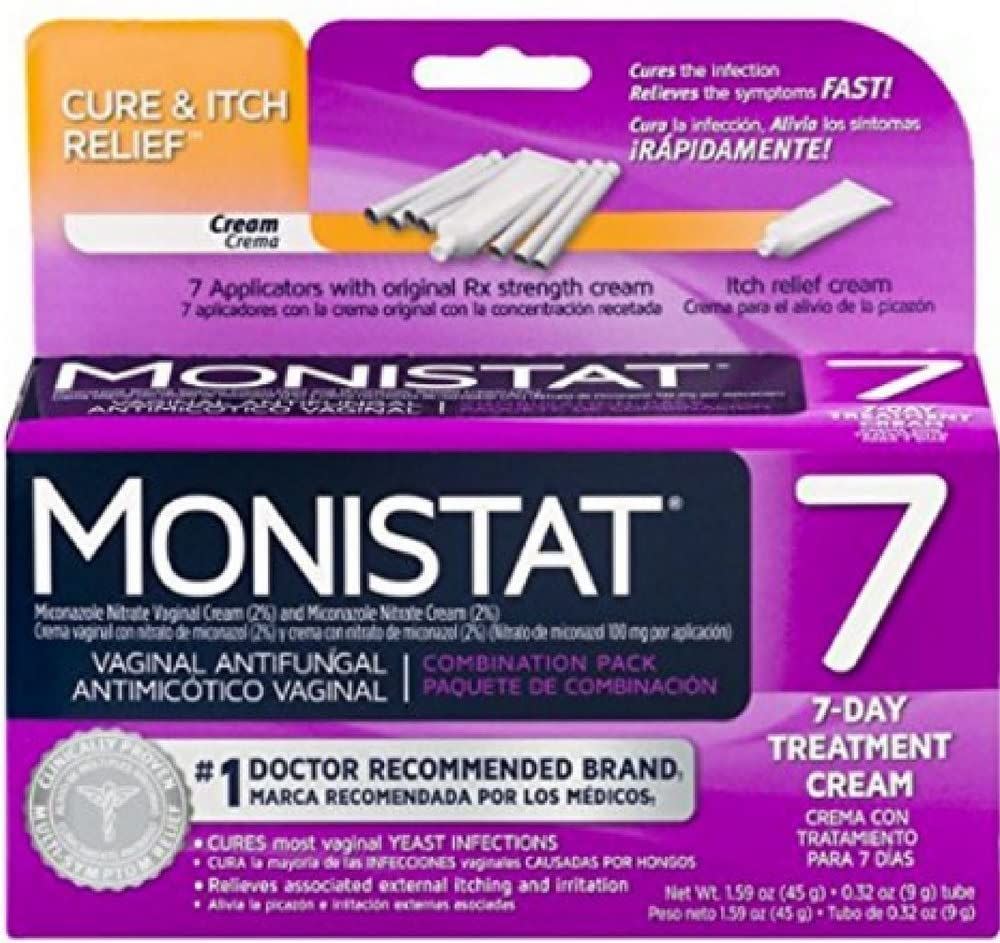
7-Day Yeast Infection Treatment
$13.97
amazon.com
AmazonYou might think one and done is great here, but in reality, you're better off with the seven-day treatment, or if you must, the three-day treatment, according to Dr. Brandye. "I see too many people who use the 1-day ovule, and they come in because they think that they are still having symptoms, but in actuality the yeast infection is gone but the medication was so concentrated that it gave them a form of dermatitis," she adds. Considering you just treated yourself for itching and irritation, the last thing you want added to your plate is vulvar dermatitis, which can also cause itching and irritation.
Dr. Shirazian agrees that you should full send for the 7-day Monistat to fix a yeast infection, "even if you're not someone who has recurrent or prolonged yeast infections". "The treatment goes straight to the source and is highly effective," she adds.
3. Whatever you do, don't get any vaginal itch cream without also getting an OTC treatment.
Using an anti-itch cream is fine, if you also use an OTC treatment. Dr. Brandye notes that she's seen women use only the anti-itch treatment thinking that it'll treat whatever is causing the itching, which can delay someone getting treatment for the underlying infection. Anti-itch creams may soothe your symptoms, but you're going to be using that tube of cream forever and a half if you think it'll do anything to treat your infection.
4. Look for OTC yeast infection medications ending in azole, miconazole, clotrimazole.
Dr. Brandye says these are easily accessible and will treat a yeast infection. However, "sometimes there can be resistance, or a different species of yeast that won't respond to these medications," she adds. In these cases, you'd wanna call up your doc to get a prescription for an oral medication like fluconazole.
5. If you have external symptoms, pick a cream over a suppository.
"Both suppositories and creams are equally effective," says Dr. Brandye, but if you happen to have more external vaginal symptoms, "the cream might help make things feel better while the medication is doing its work."
6. Save your money and don't get any of those vaginal pH test kits.
When you're trying to solve a problem in your pants FAST, it can be tempting to grab one of those expensive kits that promises to tell you whether you have a yeast infection or not, but if you have any doubts as to whether you have one, call a doc.
"The OTC test strips are only testing for the vaginal pH, which is not definitive for saying if it is a yeast infection or something else. It is only testing whether or not the pH is off," explains Dr. Brandye. Your vaginal pH could be changed due to a variety of other factors such as your menstrual cycle (totally normal BTW), recent sexual intercourse, recently having taken antibiotics, or multiple infections (which is why we keep hammering in to see a doc if there's any question!).
7. You may want to wait to have sex until your symptoms clear.
You're probably wondering how long to wait for sex after a yeast infection treatment. But honestly, if you actually have one, you may not want to do anything because of the dry, irritating feeling. "You can also spread yeast between partners, as it typically grows on moist surfaces," says Dr. Shirazian. Once you feel the treatment start to kick in, that should be your green light for any kind of sexual activity. "You can be active when you no longer feel irritated and you’re not noticing the thick signature discharge," Dr. Shirazian adds.
8. You can eat yogurt, but do *not* put it anywhere else.
You may have read about yogurt in the context of home remedies for yeast infections, but we're here to tell you that yogurt should be eaten and that's it. "Yogurt inserted into the vagina does NOT help clear the infection," emphasizes Maria Sophocles, MD, an OBGYN and medical director at Women's Healthcare of Princeton.
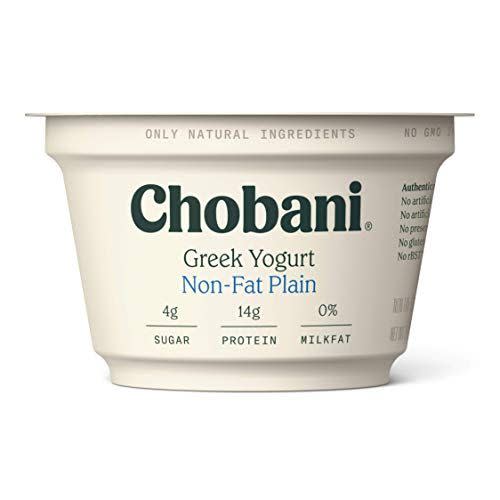
Chobani Greek Yogurt, 0%, Plain, 5.3 oz
amazon.com
amazon.comIf you want to eat yogurt with your breakfast for the probiotic boost, to cultivate a healthy balance of good bacteria in your system, go for it. It's not going to be a yeast infection cure, though, FWIW, says Monique Rainford, MD, an OBGYN and assistant clinical professor at Yale University. But there's no harm in eating plain yogurt. Choose yogurt with simple lactobacillus bacteria and without added sugar (which can attract yeast growth), says Dr. Shirazian.
9. Applying oils down there might not be the best remedy, either.
Other natural remedies for yeast infections you may hear about are coconut oil and tea tree oil. But take caution, the docs say. "I would suggest you avoid the tea tree oil or coconut oil in the vaginal area because research doesn’t suggest they work, and they may cause more harm than good," says Dr. Rainford. Tea tree oil can actually be irritating if you put it near your vulva. And coconut oil, while generally safe for your skin, "is not consistently effective at curing yeast," Dr. Sophocles points out.
10. Instead, try a sitz bath of just water (and no additives) to soothe any symptoms.
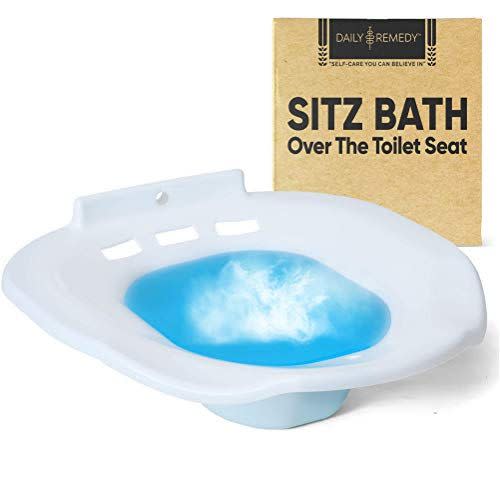
Sitz Bath Toilet
$35.00
amazon.com
amazon.comDr. Brandye says soaking for 10-15 minutes can help calm nerve endings and make you more comfortable. You can use warm or cool water, but avoid adding in anything to the soak lest you irritate things further.
11. Use icepacks for only ten minutes or less at a time.
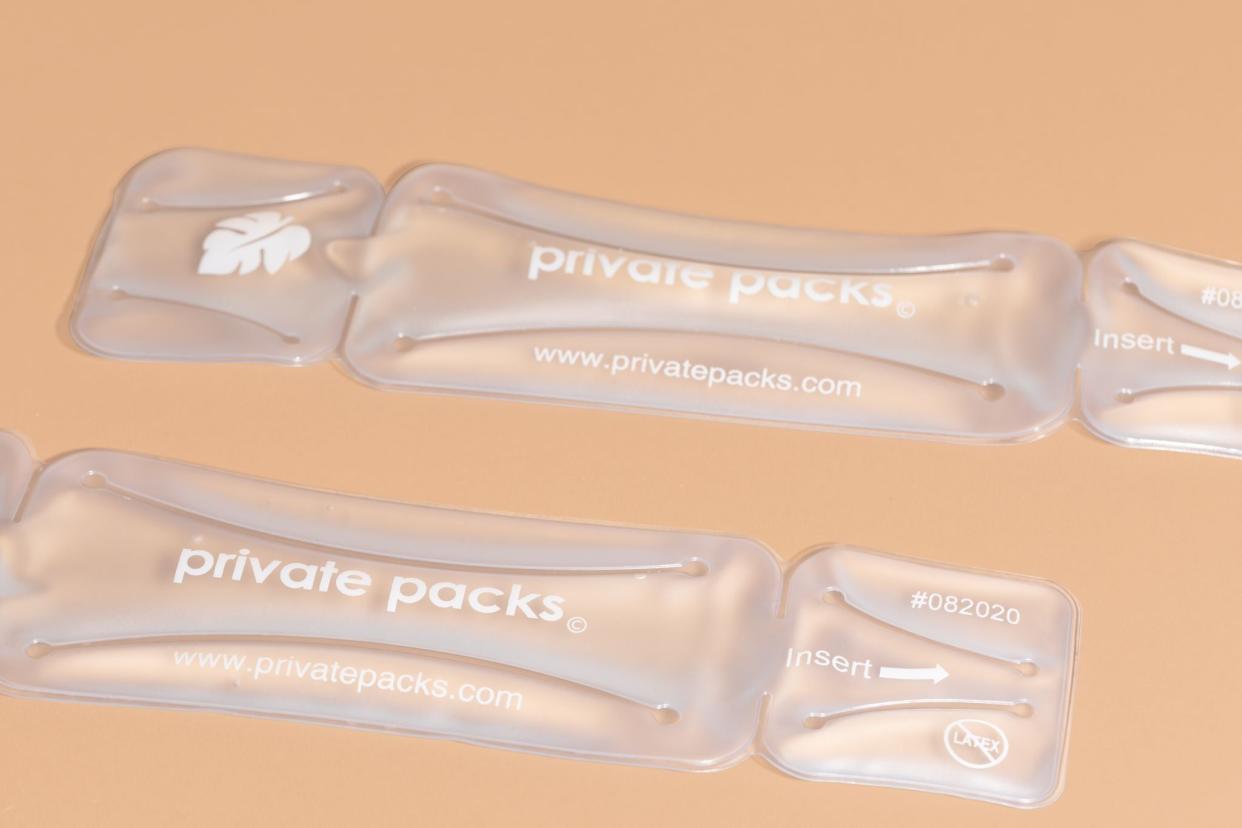
Hot & Cold Vulva Personal Pads
$29.99
privatepacks.com
privatepacks.comIf you do use an icepack to soothe your vulva, Dr. Brandye says to make sure you 1.) wrap it in a towel or washcloth, and 2.) don't leave it on longer than ten minutes as you can damage external tissues with prolonged contact with ice.
12. Ditch the tight pants.
"Yeast likes warm, moist places," says Dr. Brandye, so you should leave any tight-fitting pants or shorts out of your wardrobe rotation to avoid moisture and heat as much as possible until the situation is all-clear. On vacay with a yeast infection? Switch out of your wet bathing suit ASAP after swimming. And you don't have to skip your workout, Dr. Sophocles says. "If you want to keep rocking your Lululemon leggings, just change into a non-sweaty pair right away!" You want to aim to keep the area as well-ventilated as you can.
13. Sleep commando.
Speaking of well-ventilated...skip pants all together if possible (this is prob the easiest tip to accomplish). "I usually recommend that my patients with recurring yeast infections sleep commando style, with no underwear or pajama bottoms on, to let the area recieve more air flow," Dr. Brandye suggests.
14. Wear cotton undies, or at least underwear where the inner liner is cotton.
Certain fabrics might be even more irritating to the situation. The experts say to go with cotton, as it's the most breathable. Dr. Sophocles recommends all cotton underwear, or at least sticking with underwear with a cotton crotch.
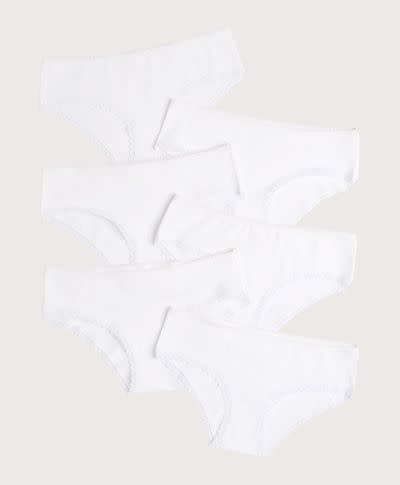
Cheeky Hipster 6-pack
$75.00
wearpact.com
wearpact.com15. Whatever you do, do not go for any vaginal washes, wipes, sprays, perfumes, or douches.
You might think this is a good idea to ~clean~ the area, but in actuality, they can make things worse. Sprays/washes/wipes etc. are not necessary, says Dr. Brandye and "often contribute to persistent vaginal irritation and infections." Not what we want here.
16. Wash using the gentlest, fragrance-free bar soap you can find.
Technically, all you really need to clean the genitals is warm water, says Dr. Brandye, but a gentle bar soap could also work. Dr. Brandye prefers bar soap over liquid, as bar soaps tend to have less additional ingredients that could cause potential irritation compared to liquid soaps.
Dr. Brandye likes the Dove Beauty Bar for Sensitive Skin for this. And while it's technically not a "soap", Dr. Brandye says it doesn't matter as the Dove bar is a mild cleanser and moisturizer, which can help maintain skin integrity.
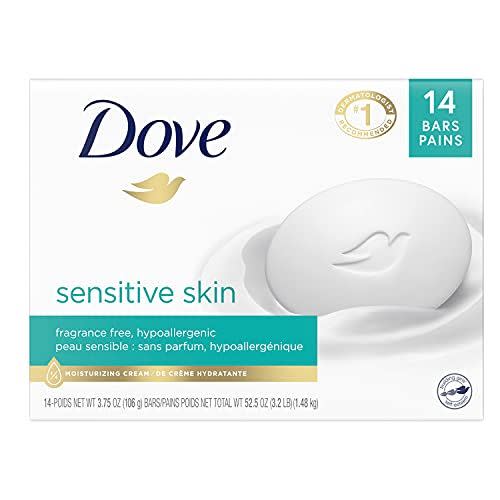
Dove Beauty Bar Sensitive Skin
$30.90
amazon.com
amazon.com"You can use another bar soap," Dr. Brandye says, but, "you just have to be mindful of things like scents/fragrances or other additives because they can be irritating."
17. Think about getting on a vaginal probiotic.
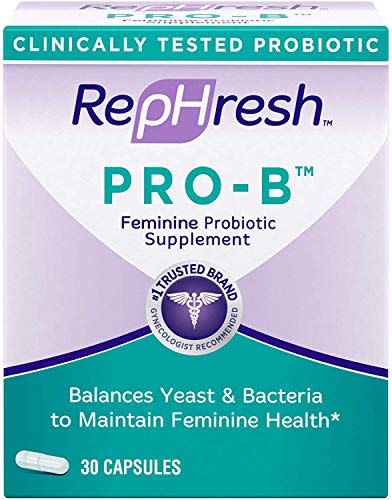
Pro B Probiotic
$22.60
amazon.com
amazon.comFor her patients with recurring infections of either yeast or BV, Dr. Brandye recommends RepHresh Pro B, which is a probiotic specifically meant for maintaining a healthy vaginal pH (and making sure you have the necessary good bacteria in your system to fight infections). "It is a tablet that you take by mouth every day, and used along with good perineal hygiene habits, works really well," she says. Just remember, you still gotta treat the yeast infection, but the probiotic is a good extra step in case you want to prevent recurring future ones.
18. If you're diabetic, always monitor your blood sugar levels.
People who have diabetes may also have higher risks of yeast infections, says Dr. Sophocles. If yeast infections are persistent for you, it'll be helpful to manage your blood sugar closely, adds Dr. Sophocles. Why? Well the yeast feed on sugar, so the more sugar that's in your bloodstream, the more that yeast can thrive.
19. Be mindful of your yeast infection triggers.
Sex may trigger yeast infections for some people (a partner's fingers or sex toys could introduce bacteria that throws off your bacterial environment, so keep things as clean as possible, friends!) or could contribute to dryness. "You might need a bit of moisture from a vaginal moisturizer such as Replens to limit dryness, which can cause abrasion and lead to yeast," says Dr. Sophocles.

Replens External Comfort Gel
$25.96
amazon.com
amazon.comYou Might Also Like
